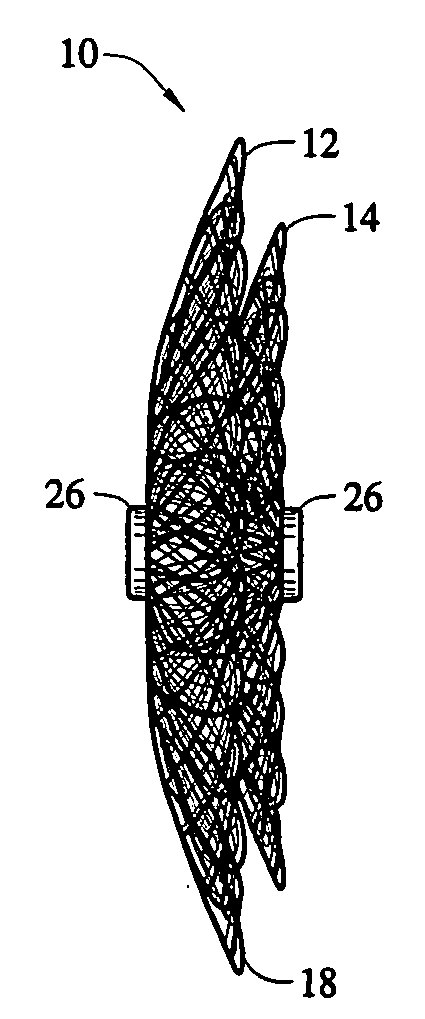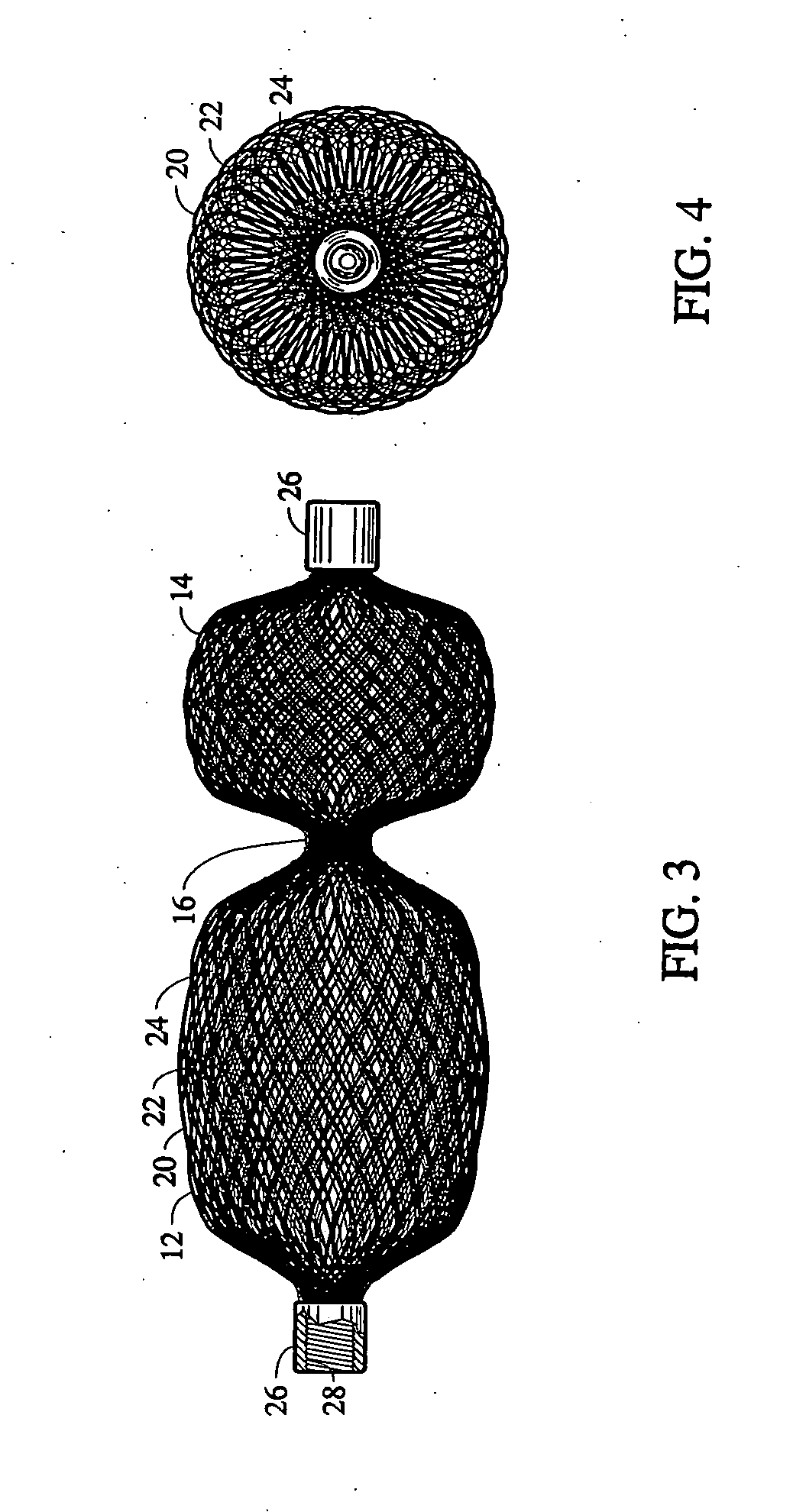Multi-layer braided structures for occluding vascular defects and for occluding fluid flow through portions of the vasculature of the body
- Summary
- Abstract
- Description
- Claims
- Application Information
AI Technical Summary
Benefits of technology
Problems solved by technology
Method used
Image
Examples
Embodiment Construction
[0031] The present invention provides a percutaneous catheter directed occlusion device for use for creating an occlusion in the vasculature of a patient's body. Thus, embodiments of the present invention may be used in occluding an abnormal opening in a patients' body, such as an Atrial Septal Defect (ASD), a ventricular septal defect (VSD), a Patent Ductus arteriosus (PDA), a Patent Foramen Ovale (PFO), and the like. They may also be used to block flow through a vein, artery or other vessel. As such, such embodiments may also be used in fabricating a flow restrictor or an aneurysm bridge or other types of vascular plugs and occluders for placement in the vascular system. In forming a medical device, via the method of the invention, a planar or tubular metal fabric is provided. The planar and tubular fabrics are formed of a plurality of wire strands having a predetermined relative orientation between the strands. The tubular fabric has metal strands which define two sets of essenti...
PUM
 Login to View More
Login to View More Abstract
Description
Claims
Application Information
 Login to View More
Login to View More - R&D
- Intellectual Property
- Life Sciences
- Materials
- Tech Scout
- Unparalleled Data Quality
- Higher Quality Content
- 60% Fewer Hallucinations
Browse by: Latest US Patents, China's latest patents, Technical Efficacy Thesaurus, Application Domain, Technology Topic, Popular Technical Reports.
© 2025 PatSnap. All rights reserved.Legal|Privacy policy|Modern Slavery Act Transparency Statement|Sitemap|About US| Contact US: help@patsnap.com



